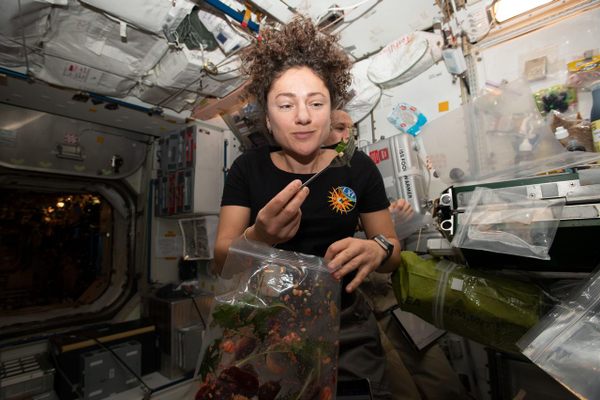How to Find the Tesla Roadster in the Sky
NASA has listed the car as a celestial object.

Not long after Elon Musk’s rocket company SpaceX launched a bright red Tesla Roadster into orbit, NASA added the car to a select list of manmade celestial objects whose position can be tracked in space.
Go to the HORIZONS system, made by the Jet Propulsion Lab, reporter Eric Holthaus noted, and you can look up the “SpaceX Roadster” in a database of “solar-system bodies.”
In the official entry on “Tesla Roadster (AKA: Starman),” NASA describes the car as “a standard Tesla Roadster automobile and a spacesuit-wearing mannequin nicknamed ‘Starman.’”
There are other excellent details in the description:
Also includes a Hot Wheels toy model Roadster on the car’s dash with a mini-Starman inside. A data storage device placed inside the car contains a copy of Isaac Asimov’s “Foundation” novels. A plaque on the attachment fitting between the Falcon Heavy upper stage and the Tesla is etched with the names of more than 6,000 SpaceX employees.
The HORIZON system has a specific purpose—it generates data that allows people to track the movement of celestial objects. Most of the objects in the database are not manmade: It includes “381,106 asteroids, 2,435 comets, 168 planetary satellites, 9 planets, the Sun.” But there are “select spacecraft” on the list as well.
Using this information, it is possible to find Starman in the sky, as the Virtual Telescope Project did. “We immediately spotted the Tesla Roadster, quite bright… moving image after image across the stars. At the time of our observations, the car was at about 470,000 km from us,” they wrote.

Like other celestial bodies, the Roadster will stay in the sky, rising and setting daily. Right now, says Gianluca Masi, an astrophysicist with the Virtual Telescope Project, you need a telescope of six-inches or larger to image the car. But since it’s speeding away into space, a month from now, you’d need a much larger scope, of at least 16 inches.
The orbit data from HORIZONS also means that it’s possible to predict when Starman will cruise close by Earth again, making it easier to spot, as Popular Mechanics reports. The closest the car will get to Mars is in October 2020; it’ll pass by Earth again in 2026, 2031, and 2039. Mark your calendars, and get those telescopes ready.











Follow us on Twitter to get the latest on the world's hidden wonders.
Like us on Facebook to get the latest on the world's hidden wonders.
Follow us on Twitter Like us on Facebook